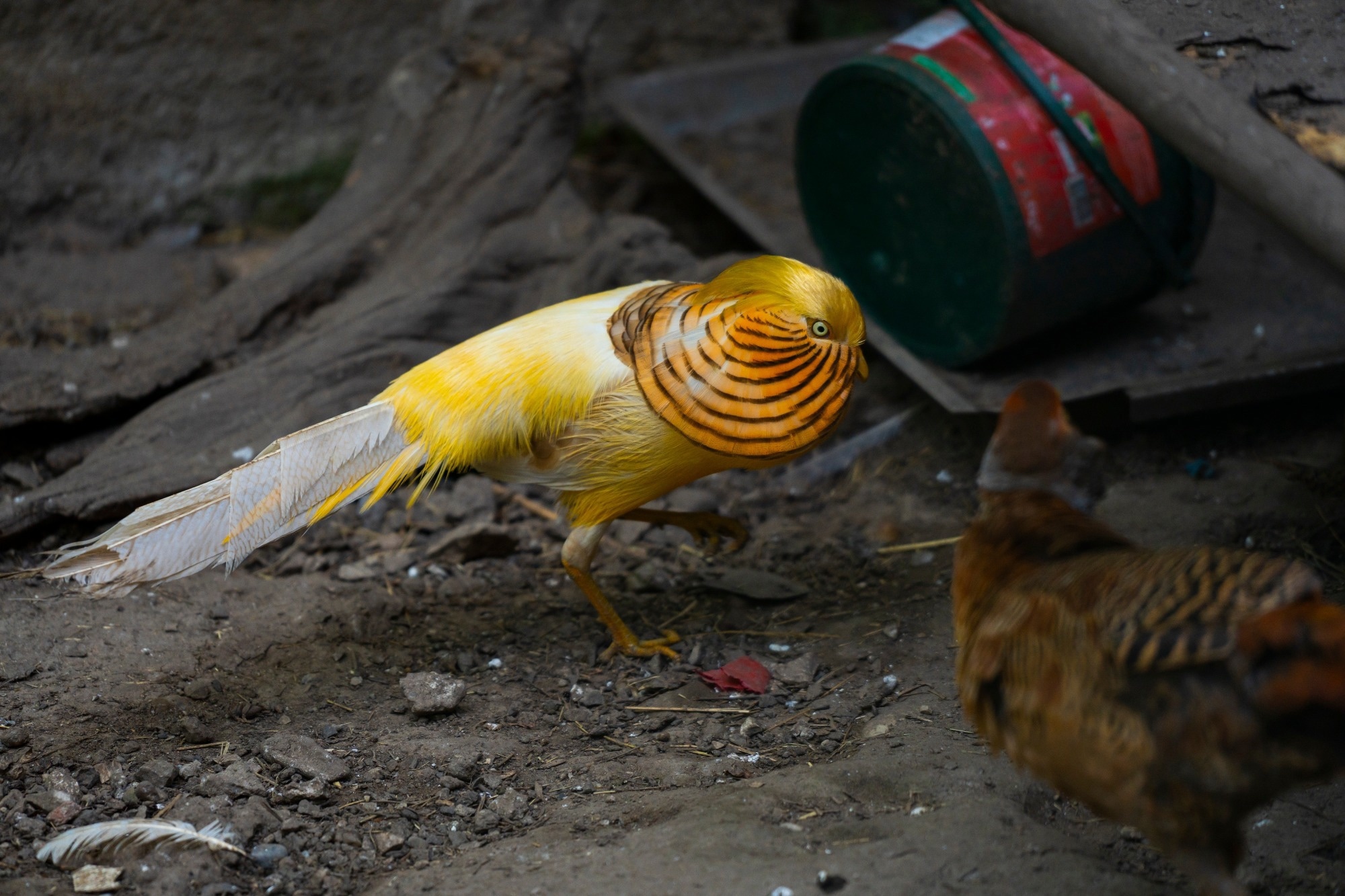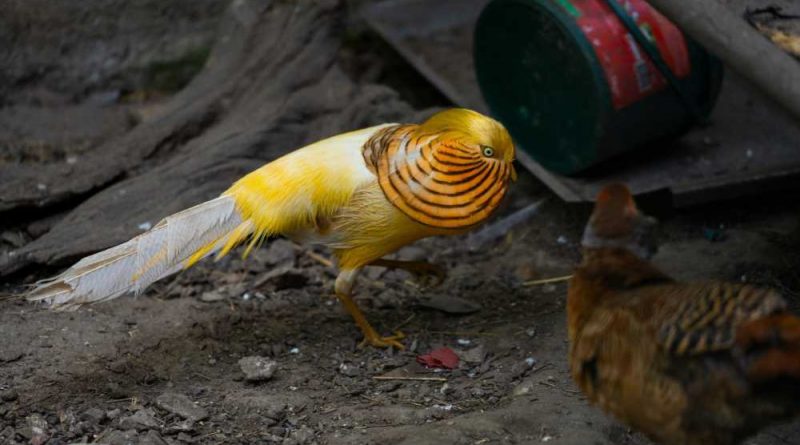Unprecedented outbreak: deadly avian disease sweeps through wild bird species in China
The severe acute respiratory syndrome coronavirus 2 (SARS-CoV-2) led not only to a pandemic of coronavirus disease 2019 (COVID-19) but heightened fears about emerging zoonotic diseases.
A new report from China published in the Animal Diseases Journal reveals the importance of Avibacterium paragallinarum as a potential avian pathogen, causing cold and even death among multiple avian species.
 Study: Avibacterium paragallinarum: an emerging birds pathogen in Qinling wildlife conservation center, China. Image Credit: martin.dlugo/Shutterstock.com
Study: Avibacterium paragallinarum: an emerging birds pathogen in Qinling wildlife conservation center, China. Image Credit: martin.dlugo/Shutterstock.com
Introduction
Infectious coryza (IC) is common among chickens and is caused by A. paragallinarum. It affects mainly the upper respiratory tract, leading to inflammation, swelling of the face, conjunctivitis, nasal discharge, diarrhea, and loss of appetite. Affected broiler and layer hens grow poorly and lay less, respectively.
Sometimes the infection becomes chronic, leading to prolonged respiratory tract disease, swollen head syndrome, inflammation of the air saccules, arthritis of the tarsal bones, and even septicemia. When complicated by other bacteria, it may cause increased mortality rates.
This makes it important to diagnose and treat the infection in a timely manner.
Some Avibacterium species are commensals, but others are pathogenic. A. paragallinarum is a gram-negative facultative anaerobe, which can colonize and adhere to the nasal mucosa early in infection. China practices vaccination to prevent this infection among poultry.
The commercial vaccine protects against Serovar A, B, and C. The bacterium is least resistant to cotrimoxazole. When treated with antibiotics, the birds stage a clinical recovery but remain lifelong carriers.
While IC has been reported in multiple countries, the present report focuses on an outbreak in Qinling, which marks the boundary between north and south China. The region is a biodiversity hotspot, containing several natural reserves.
Many endemic species under threat make their home here. Conservation programs operating here include captive breeding as well as wildlife surveillance.
The recent outbreak occurred among wild avian species in Qinling. The researchers analyzed the earliest isolated strain of A. paragallinarum from this area.
The outbreak
The first symptoms of infection were reported in a Golden pheasant in May 2022. It had facial edema, and the infraorbital sinuses presented a discharge. Similar signs were soon observed in a large number of wild birds at the Qinling wildlife shelter, all of which were from a natural reserve.
Despite quarantine and isolation measures, three more wild bird species developed signs of IC. Many of the affected birds had facial swelling. Several died, all of which showed swollen faces and growth failure.
In all, 18 Golden pheasants, two peafowls, and 57 Temminck tragopans were infected. Three of the Golden pheasants succumbed to it.
Postmortem examinations of Golden pheasants revealed that the infraorbital sinuses contained cheesy exudative material while slight bleeding into the trachea. The lungs were spared. The infected birds could not feed properly because of decreased vision.
Specific polymerase chain reaction (PCR) testing confirmed the presence of A. paragallinarum in symptomatic birds but not other species in the area. A common source of infection may have infected all the birds.
Phylogenetic analysis suggests that the strain responsible for the outbreak (LGT2022) has 96.5%-98.2% similarity to isolates from poultry.
The infected birds were treated with sulfa drugs following sensitivity testing. Most recovered promptly, with full recovery within ten days of treatment. The last case was reported in February 2023.
What are the implications?
The study highlights the spreading of IC caused by A. paragallinarum among wild birds of the same and different species. This is the first such report, which is not common. Some affected species include the Golden pheasant, Temminck's tragopan, and Peafowls.
The resulting deficit in vision may cause affected birds to starve or fall prey to predators. The infection may present differently among different species of birds, and this gives a topic for further research.
The transmission of infectious protozoal disease in avian hosts may reduce the severity of A. paragallinarum infection in birds.
These findings are crucial for understanding the impact of A. paragallinarum infection on wild birds and developing effective prevention and control strategies to protect both commercial and wild birds."
While no novel cases have been observed, it is essential to continue collecting samples and testing for pathogens in this area to forestall further disease clusters.
-
Xie, H. et al. (2023) "Avibacterium paragallinarum: an emerging birds pathogen in Qinling wildlife conservation center, China", Animal Diseases, 3(1). doi: 10.1186/s44149-023-00084-w. https://animaldiseases.biomedcentral.com/articles/10.1186/s44149-023-00084-w.
Posted in: Medical Science News | Medical Research News | Miscellaneous News | Disease/Infection News
Tags: Arthritis, Bacteria, Bleeding, Chronic, Cold, Conjunctivitis, Coronavirus, covid-19, Diarrhea, Drugs, Edema, Inflammation, Lungs, Mortality, Pandemic, Pathogen, Polymerase, Polymerase Chain Reaction, Research, Respiratory, SARS, SARS-CoV-2, Septicemia, Severe Acute Respiratory, Severe Acute Respiratory Syndrome, Syndrome, Vaccine

Written by
Dr. Liji Thomas
Dr. Liji Thomas is an OB-GYN, who graduated from the Government Medical College, University of Calicut, Kerala, in 2001. Liji practiced as a full-time consultant in obstetrics/gynecology in a private hospital for a few years following her graduation. She has counseled hundreds of patients facing issues from pregnancy-related problems and infertility, and has been in charge of over 2,000 deliveries, striving always to achieve a normal delivery rather than operative.
Source: Read Full Article



